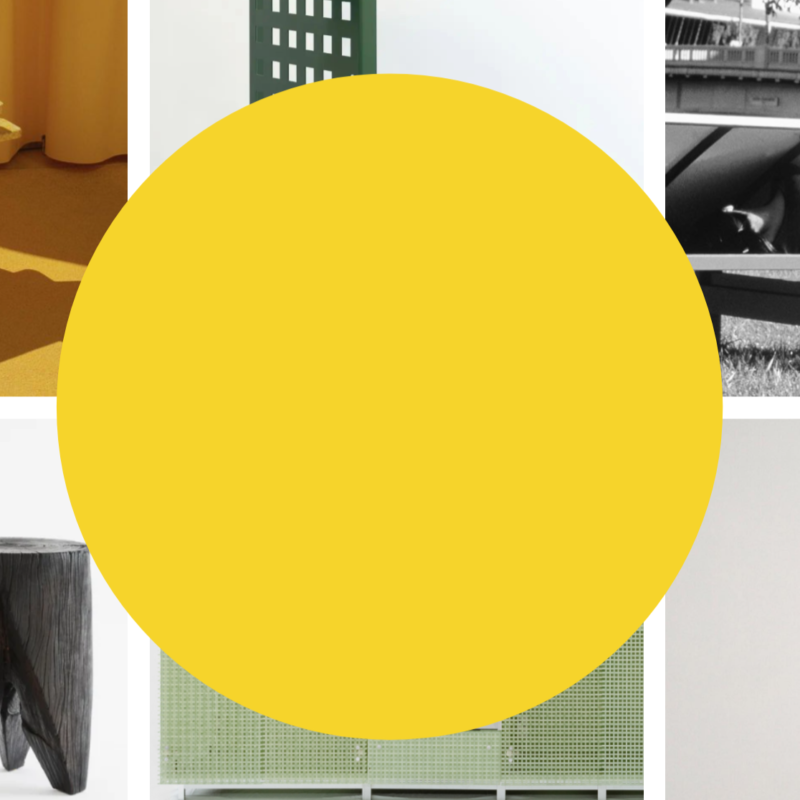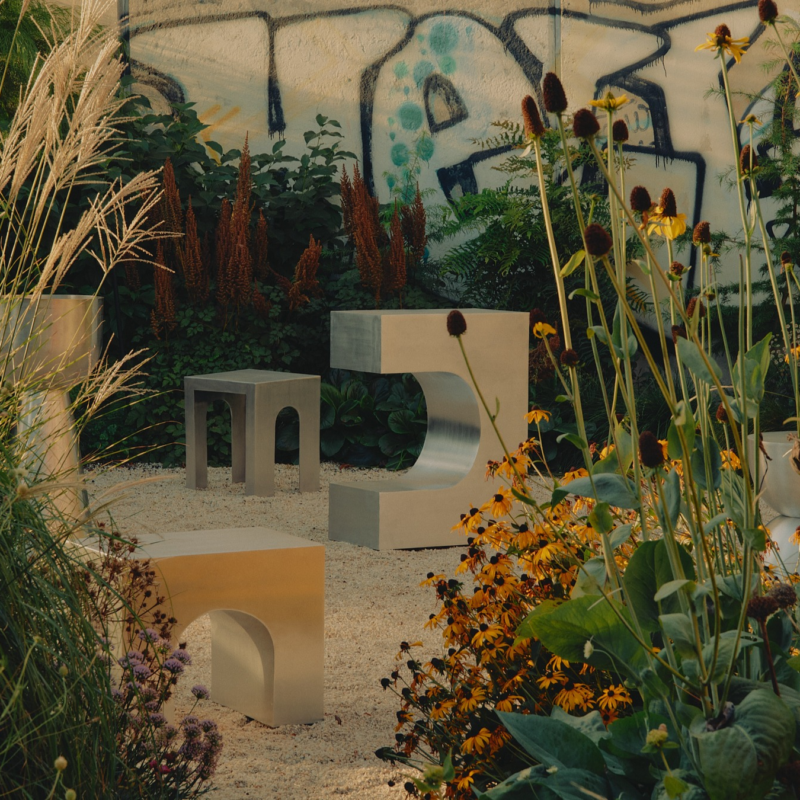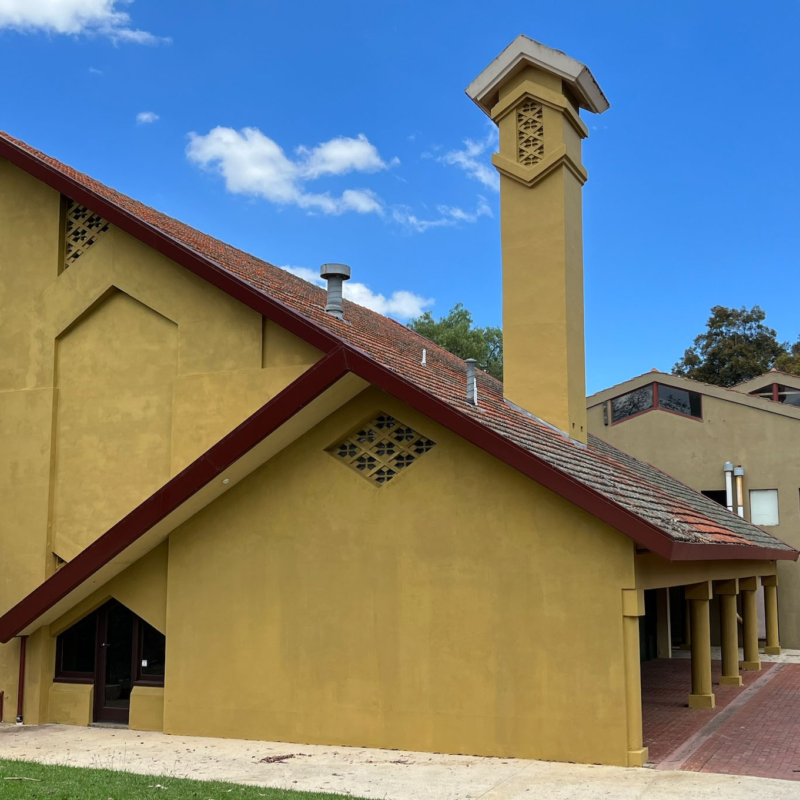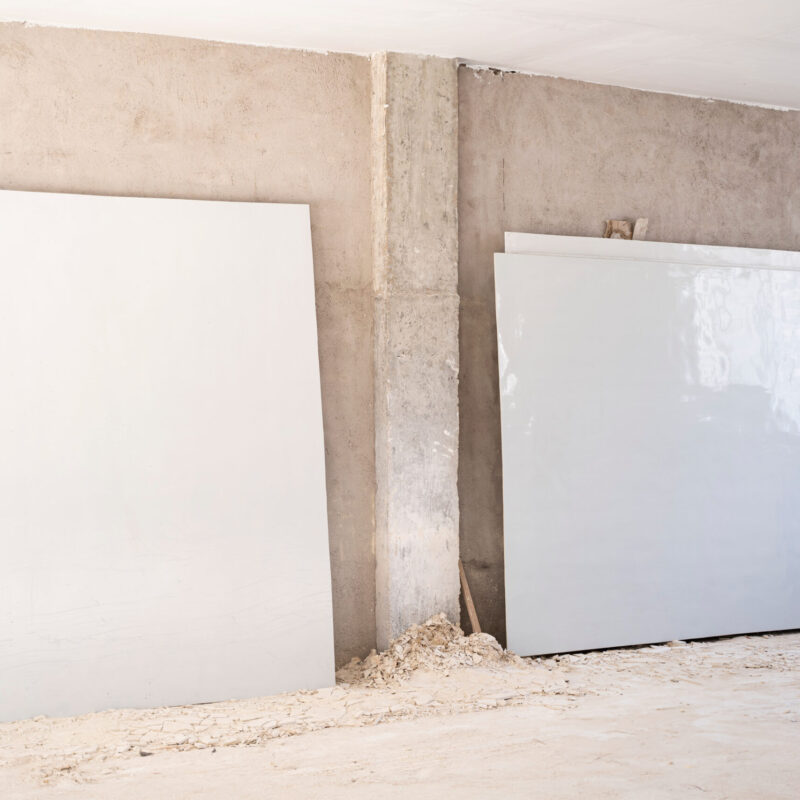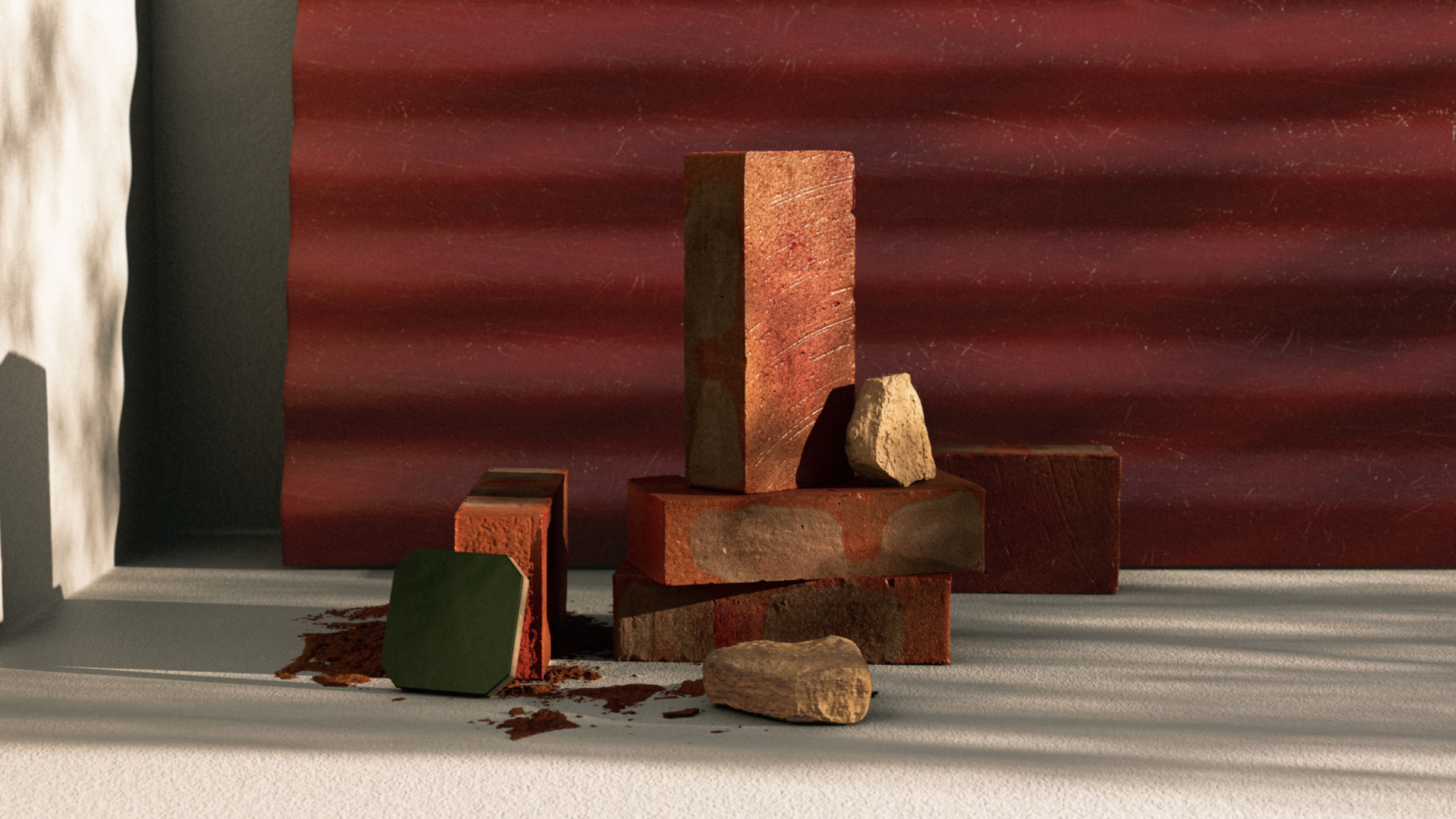
Overlay | A New Australian Heritage Past Event
Tickets
Dates
Venue
Access
All gender bathroom, Assistance animals welcome, Seating availableHeritage guidelines have preserved a portion of our architectural history giving rise to an Australian heritage aesthetic embedded in our collective memory. Visions of cast iron balustrades, polychrome brickwork and decorative stucco evoke feelings of nostalgia but early heritage aesthetics are built on an inherited and colonial visual language. Federation style homes were an early attempt at establishing a more distinct Australian visual identity. Over a century later, we are facing pressures of increased density and sustainability and designers are turning their focus to improving connection to community and country. Heritage overlays aim to preserve a past but they are not providing a clear framework to address these issues and may be inhibiting the growth of a new era of Australian design.
Overlay presents visions of a new Australian heritage through the eyes of architects, interior and object designers. The work presented is a fresh interpretation of an Australian heritage aesthetic from the inside out investigating how we may more authentically reflect our climate and context.
Participants
The upbringing of Anouska Milstein, Milan-born and raised in Melbourne (Naarm/Birrarung-ga), led to an early fascination with different cultures, the arts, global travel, design, the naturalistic environment, and the human mind. Anouska’s interest in people led her to complete an undergraduate in psychology, only to change direction and pursue studies that allowed her to channel her lifelong creativity into a career. Anouska started A.mi (Anouska Milstein Interiors) as an interior design practice primarily interested in how space can effect one’s emotional wellbeing.
Since launching their practice in 2002, Austin Maynard Architects have worked purposefully and passionately to create resilient, highly sustainable, beautiful and robust, long-lasting architecture. Architecture designed to meet the challenges of the climate crisis and, as shown through their more recent multi-residential work, in direct response to Australia’s affordability housing crisis. In addressing and attempting to solve these issues directly, Austin Maynard Architects ambitiously took on the role of both architect and developer for their first multi-residential project Terrace House.
Brave New Eco is an architecture and interior design studio based in Melbourne (Naarm/Birrarung-ga), that takes a holistic approach to design integrating the built, interior and ecological environments. Brave New Eco seeks to resolve design problems with minimal, considered interventions using a deeply responsive and resourceful approach. BNE are endlessly curious about design as a tool for ecological resilience and social change, interested in how humans will live in the future and are keen to share our ideas so that our future can be the best possible one.
Hin was born in Hong Kong, lived in Europe and is currently based in Melbourne (Naarm/Birrarung-ga). Hin’s multicultural background has been a platform for his diverse and playful style, primarily focusing on product and object designs. Hin’s design objective is to create products that challenge the use of traditional material assumptions and that are sustainable.
Dillon Webster is an architectural heritage consultant and freelance writer, currently residing in Melbourne. With degrees in architecture from Rensselaer Polytechnic Institute and urban and cultural heritage from University of Melbourne, he desires to unpack the historically embedded procedures and decisions of the design industry.
Rijavec’s work has been highly awarded, widely exhibited and published including: Architects for The New Millennium and Pure Form Images; Fin De Ciecle RMIT; Melbourne Master Architects Tarrawarra; Design City Melbourne RMIT; Melbourne Now NGV; Made in Australia AURDC; Boyd’s Error Planning’s Curse Treatise, Pin Up Gallery. He inspired and co-directed NOW+WHEN AIA’s 2010 Venice Biennale Exhibition, received numerous AIA excellence awards, served on and chaired AIA awards juries, addressed numerous architectural audiences nationally and is an AIA fellow.
Joanne Odisho binds her knowledge of interior and furniture design to create objects of distinct visual appeal. Her aim is to create pieces that fulfil an interior and evoke a sense of harmony within their environment. Along with this, her objects focus on highlighting the importance of cautious material selection and waste minimisation. With a firm belief in the importance of product life cycles, each decision is made with environmental impact at the forefront.
Justin Hutchinson is a Melbourne-based industrial designer, lecturer and urban innovator who is a firm believer in the positive value of design. Justin’s experience with outdoor products and environmental design sparked his research into the duality between the manufactured and the natural environment — designing for longevity and ultimately trying to forge a way for the human-made to co-exist with nature.
Locki is a furniture designer and 3D artist based on the lands of the Kulin Nation whose work spans both physical and digital mediums. Locki’s work re-interprets traditional forms and methods for a modern audience, and by using few visible fixtures, they are able to achieve clean silhouettes that are dramatic and playful in proportion. With a particular focus on minimal intervention and sustainable design practices, Locki believes that good design should intentionally and carefully walk the line between beauty and function.
Maryam Moghadam is a furniture designer and maker based on the lands of the Kulin Nation specialising in work that evokes a sense of play. Experimentation and the drive to push the boundaries of design innovation are at the core of her practice, where she blends the creative freedom of art-making and the pragmatism of industrial design.
Keedan Rigney is a Ngarrindjeri/Warangu visual artist based in Naarm on Wurundjeri Country. His work will always depict connections of country, family and health, his recent pieces are the complex similarities between Healthy Country and Healthy people. Land, Water, Sky Country are mutually connected, and all feel the same sufferings from one another, very alike to our mental and physical health.
@corneliuspaint
Natalie is a Sydney-based architect, designer and native plant enthusiast. Starting her career in 2015, she has a wide range of experience in the field of design, including architecture, interior design, and large scale urban master planning projects. Her passion however lies in examining how architecture can achieve both social and environmental sustainability.
At Studio Co and Co, collaboration is at the heart of everything they do. Ineke Hutter is the Creative Director of Studio Co and Co. and she stands proudly beside an excellent team of people with a wild array of passions and incredible skills who bring their brilliance to every single project they undertake. Through the power of good design, they build worlds.
Established in 2016, Studio Edwards is dedicated to pioneering projects, such as the Micro-hotel, House 28 (a prefab dwelling for challenging coastal sites), a laneway house designed from shadow diagrams, and Sky Pavilion (a prefab steel roof garden for a 4-storey townhouse). The studio has received numerous accolades, including Designer of the Year 2019 and Best Retail and Best Workspace in 2021, along with various sustainability awards. Their self-initiated project ‘alt.material’ in 2018 explored fabrication and materiality, resulting in an ongoing materials archive.
Themeda Studio is a landscape architecture and garden design practice founded by Claire Newton in 2021. Claire is passionate about the intersections between built environment design, socio-cultural equality and ecological sustainability. With a background in horticulture and journalism, Claire’s multi-disciplinary style informs her process-based and collaborative approach to design.
Fascinated by the tension that lies between natural materials and contemporary design and manufacture, Tom Fereday develops unique designs originating from an intrinsic inquiry into the role of objects today. Built on the principle of honest design Tom Fereday’s work celebrates the materials and manufacture behind furniture and objects, guiding considered and thoughtful design outcomes that explore the notion of quiet innovation.
Rakumba’s luxury lighting collections have a European feel, drawing from a multicultural background just like our Australian home. Making Beauty drives their people; forging a design legacy of iconic lighting pieces. They collaborate with Australian and international designers of global renown to create sophisticated, deeply considered, and rigorously authentic designs.
Dates
Tickets
Venue
Access
All gender bathroom, Assistance animals welcome, Seating availableHeritage guidelines have preserved a portion of our architectural history giving rise to an Australian heritage aesthetic embedded in our collective memory. Visions of cast iron balustrades, polychrome brickwork and decorative stucco evoke feelings of nostalgia but early heritage aesthetics are built on an inherited and colonial visual language. Federation style homes were an early attempt at establishing a more distinct Australian visual identity. Over a century later, we are facing pressures of increased density and sustainability and designers are turning their focus to improving connection to community and country. Heritage overlays aim to preserve a past but they are not providing a clear framework to address these issues and may be inhibiting the growth of a new era of Australian design.
Overlay presents visions of a new Australian heritage through the eyes of architects, interior and object designers. The work presented is a fresh interpretation of an Australian heritage aesthetic from the inside out investigating how we may more authentically reflect our climate and context.
Participants
The upbringing of Anouska Milstein, Milan-born and raised in Melbourne (Naarm/Birrarung-ga), led to an early fascination with different cultures, the arts, global travel, design, the naturalistic environment, and the human mind. Anouska’s interest in people led her to complete an undergraduate in psychology, only to change direction and pursue studies that allowed her to channel her lifelong creativity into a career. Anouska started A.mi (Anouska Milstein Interiors) as an interior design practice primarily interested in how space can effect one’s emotional wellbeing.
Since launching their practice in 2002, Austin Maynard Architects have worked purposefully and passionately to create resilient, highly sustainable, beautiful and robust, long-lasting architecture. Architecture designed to meet the challenges of the climate crisis and, as shown through their more recent multi-residential work, in direct response to Australia’s affordability housing crisis. In addressing and attempting to solve these issues directly, Austin Maynard Architects ambitiously took on the role of both architect and developer for their first multi-residential project Terrace House.
Brave New Eco is an architecture and interior design studio based in Melbourne (Naarm/Birrarung-ga), that takes a holistic approach to design integrating the built, interior and ecological environments. Brave New Eco seeks to resolve design problems with minimal, considered interventions using a deeply responsive and resourceful approach. BNE are endlessly curious about design as a tool for ecological resilience and social change, interested in how humans will live in the future and are keen to share our ideas so that our future can be the best possible one.
Hin was born in Hong Kong, lived in Europe and is currently based in Melbourne (Naarm/Birrarung-ga). Hin’s multicultural background has been a platform for his diverse and playful style, primarily focusing on product and object designs. Hin’s design objective is to create products that challenge the use of traditional material assumptions and that are sustainable.
Dillon Webster is an architectural heritage consultant and freelance writer, currently residing in Melbourne. With degrees in architecture from Rensselaer Polytechnic Institute and urban and cultural heritage from University of Melbourne, he desires to unpack the historically embedded procedures and decisions of the design industry.
Rijavec’s work has been highly awarded, widely exhibited and published including: Architects for The New Millennium and Pure Form Images; Fin De Ciecle RMIT; Melbourne Master Architects Tarrawarra; Design City Melbourne RMIT; Melbourne Now NGV; Made in Australia AURDC; Boyd’s Error Planning’s Curse Treatise, Pin Up Gallery. He inspired and co-directed NOW+WHEN AIA’s 2010 Venice Biennale Exhibition, received numerous AIA excellence awards, served on and chaired AIA awards juries, addressed numerous architectural audiences nationally and is an AIA fellow.
Joanne Odisho binds her knowledge of interior and furniture design to create objects of distinct visual appeal. Her aim is to create pieces that fulfil an interior and evoke a sense of harmony within their environment. Along with this, her objects focus on highlighting the importance of cautious material selection and waste minimisation. With a firm belief in the importance of product life cycles, each decision is made with environmental impact at the forefront.
Justin Hutchinson is a Melbourne-based industrial designer, lecturer and urban innovator who is a firm believer in the positive value of design. Justin’s experience with outdoor products and environmental design sparked his research into the duality between the manufactured and the natural environment — designing for longevity and ultimately trying to forge a way for the human-made to co-exist with nature.
Locki is a furniture designer and 3D artist based on the lands of the Kulin Nation whose work spans both physical and digital mediums. Locki’s work re-interprets traditional forms and methods for a modern audience, and by using few visible fixtures, they are able to achieve clean silhouettes that are dramatic and playful in proportion. With a particular focus on minimal intervention and sustainable design practices, Locki believes that good design should intentionally and carefully walk the line between beauty and function.
Maryam Moghadam is a furniture designer and maker based on the lands of the Kulin Nation specialising in work that evokes a sense of play. Experimentation and the drive to push the boundaries of design innovation are at the core of her practice, where she blends the creative freedom of art-making and the pragmatism of industrial design.
Keedan Rigney is a Ngarrindjeri/Warangu visual artist based in Naarm on Wurundjeri Country. His work will always depict connections of country, family and health, his recent pieces are the complex similarities between Healthy Country and Healthy people. Land, Water, Sky Country are mutually connected, and all feel the same sufferings from one another, very alike to our mental and physical health.
@corneliuspaint
Natalie is a Sydney-based architect, designer and native plant enthusiast. Starting her career in 2015, she has a wide range of experience in the field of design, including architecture, interior design, and large scale urban master planning projects. Her passion however lies in examining how architecture can achieve both social and environmental sustainability.
At Studio Co and Co, collaboration is at the heart of everything they do. Ineke Hutter is the Creative Director of Studio Co and Co. and she stands proudly beside an excellent team of people with a wild array of passions and incredible skills who bring their brilliance to every single project they undertake. Through the power of good design, they build worlds.
Established in 2016, Studio Edwards is dedicated to pioneering projects, such as the Micro-hotel, House 28 (a prefab dwelling for challenging coastal sites), a laneway house designed from shadow diagrams, and Sky Pavilion (a prefab steel roof garden for a 4-storey townhouse). The studio has received numerous accolades, including Designer of the Year 2019 and Best Retail and Best Workspace in 2021, along with various sustainability awards. Their self-initiated project ‘alt.material’ in 2018 explored fabrication and materiality, resulting in an ongoing materials archive.
Themeda Studio is a landscape architecture and garden design practice founded by Claire Newton in 2021. Claire is passionate about the intersections between built environment design, socio-cultural equality and ecological sustainability. With a background in horticulture and journalism, Claire’s multi-disciplinary style informs her process-based and collaborative approach to design.
Fascinated by the tension that lies between natural materials and contemporary design and manufacture, Tom Fereday develops unique designs originating from an intrinsic inquiry into the role of objects today. Built on the principle of honest design Tom Fereday’s work celebrates the materials and manufacture behind furniture and objects, guiding considered and thoughtful design outcomes that explore the notion of quiet innovation.
Rakumba’s luxury lighting collections have a European feel, drawing from a multicultural background just like our Australian home. Making Beauty drives their people; forging a design legacy of iconic lighting pieces. They collaborate with Australian and international designers of global renown to create sophisticated, deeply considered, and rigorously authentic designs.

